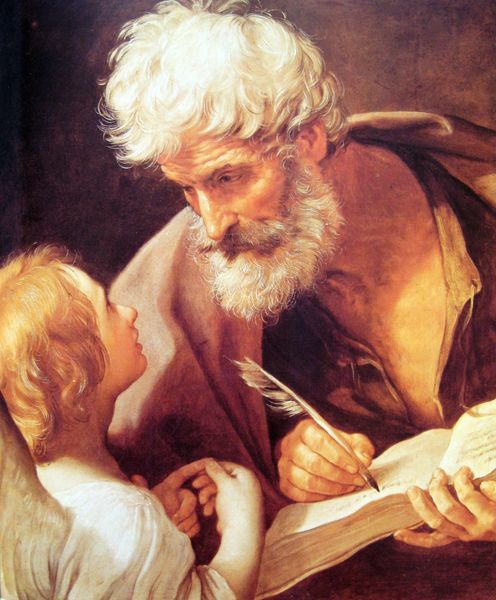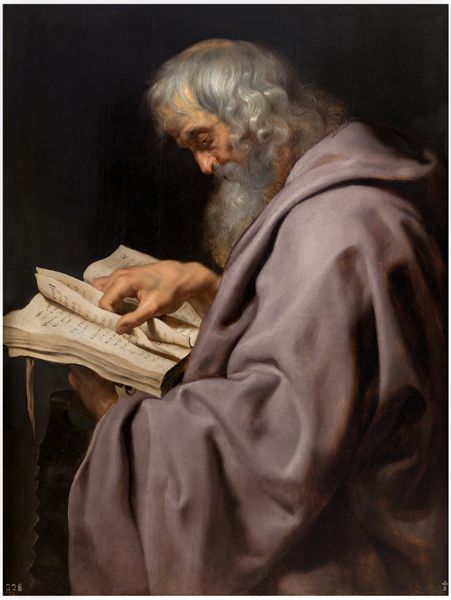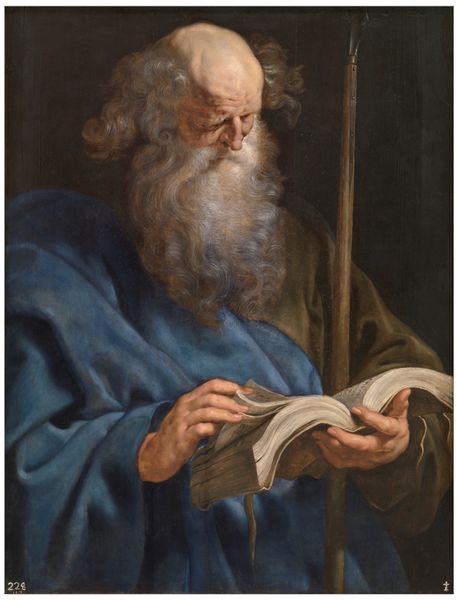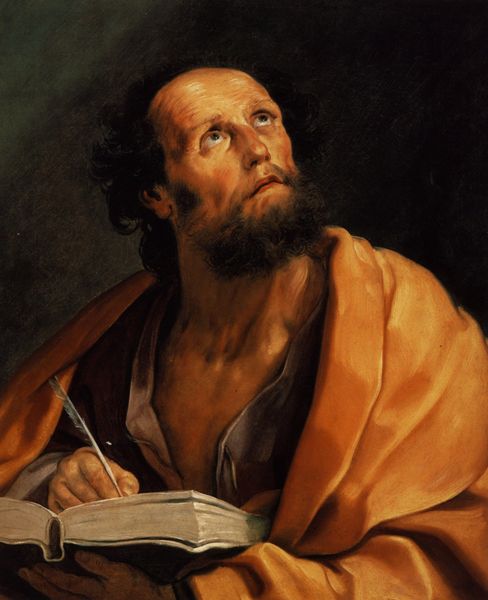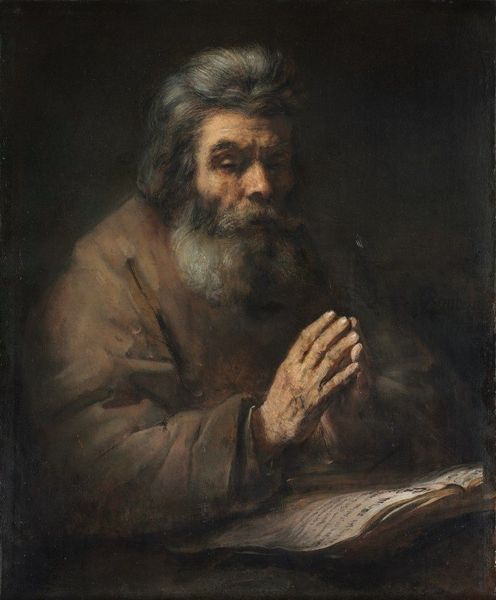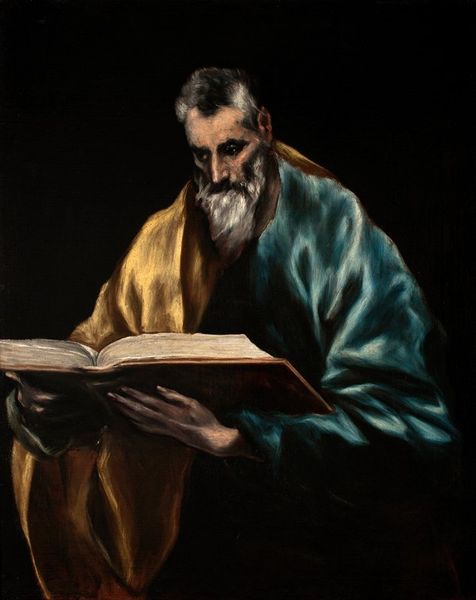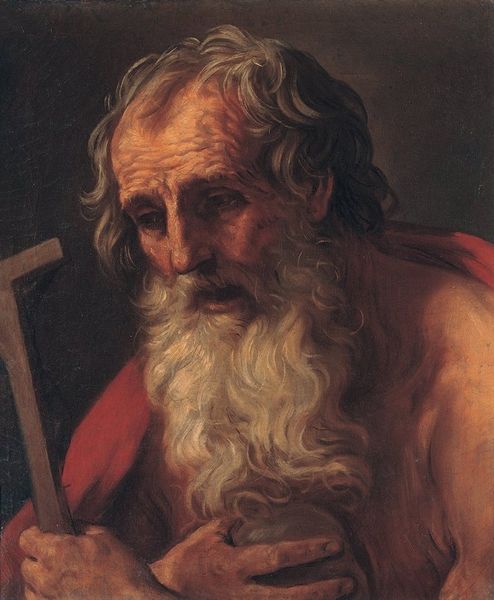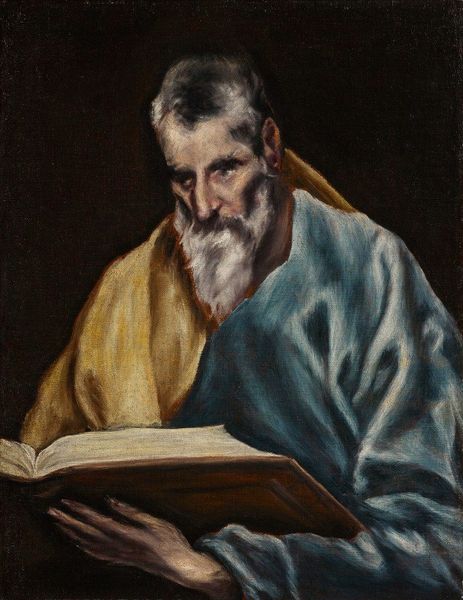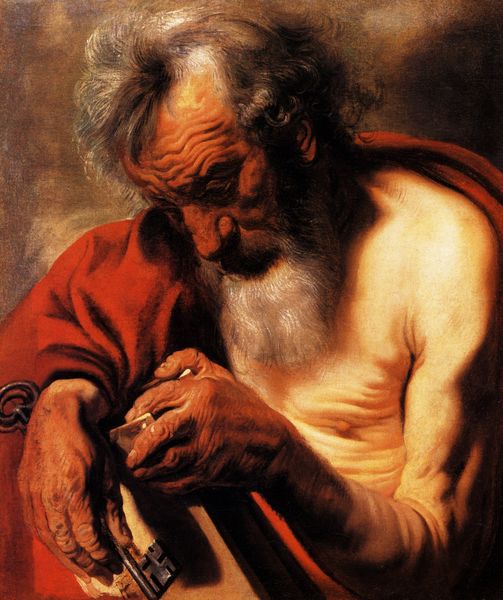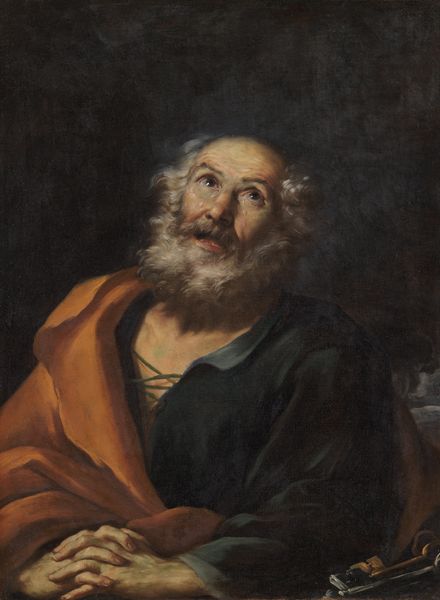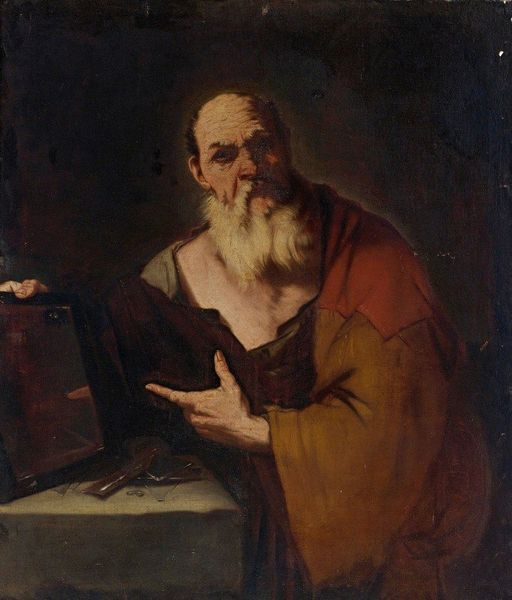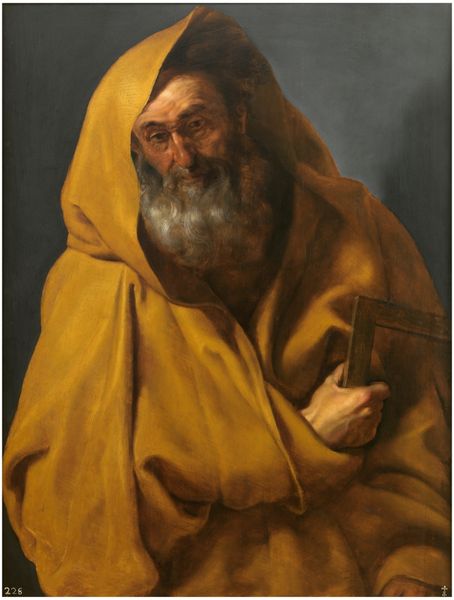
painting, oil-paint
#
portrait
#
baroque
#
portrait
#
painting
#
oil-paint
#
history-painting
Dimensions: 78 x 65 cm
Copyright: Public domain
Editor: Here we have Guido Reni’s "Saint Mark," painted in 1621, rendered in oil paint. The way Mark’s face is illuminated suggests contemplation, maybe even divine inspiration. How do you interpret this work? Curator: Reni presents us with a figure deeply entrenched in the act of creation, but we must also consider the broader societal context. How might the ideals of the Counter-Reformation influence the representation of a biblical figure like Saint Mark? Editor: That's a great point. I hadn't considered the Counter-Reformation’s influence. So, you are saying that the painting perhaps functions as a promotion of the church teachings and values? Curator: Precisely. It's vital to examine how power dynamics inform artistic choices. Look at the way Mark is presented, not just as a writer, but as a conduit for divine will. Doesn't this sanctified portrayal implicitly reinforce the Church’s authority? How can we use such historical images to understand similar assertions of power today? Editor: Now that you mention power, is the concentration on St. Mark at his work more than just an aesthetic choice? Does it amplify his personal contribution? Curator: Think about what this image omits. Where are the marginalized voices? Whose stories are deemed less worthy of depiction? Reni’s technical mastery serves not only artistic expression, but a specific ideological agenda. Considering the exclusion of those who were not part of the dominating discourse, what could a contemporary, subversive rewriting of this narrative look like? Editor: This is fascinating. I will certainly think twice about these implicit narratives when approaching art history in the future. Curator: Excellent! Let’s encourage each other to delve deeper into how art intersects with societal power structures.
Comments
No comments
Be the first to comment and join the conversation on the ultimate creative platform.
